By: Tahir Kamran*
The last 20 years have seen a growing appetite for knowledge about Islam and Muslims among literati world over. Various theoretical, as well as tangible, reasons can be advanced for this curiosity. Much of it was stirred in the wake of American scholar Samuel Huntington’s theory about the ‘Clash of Civilizations’ that projected Muslims along with some other Asian nations as the ‘Other’ to the West. Even when one disputes the validity of his ideas, what cannot be disputed is their all-permeating impact. As a result, Islam and Muslims have become the subject of intellectual and epistemic inquiry, particularly in the Western world.
The unique events of 9/11 that entailed a large loss of human life in New York gave further credence to Muslim Otherness vis-à-vis the West. The demonisation of Muslims that ensued also synchronised with similar developments such as the London bombings and acts of terrorism in Madrid and Paris. The figure of ‘Muslim’, constructed and confirmed as the diabolical ‘Other’, became the most sought after subject for scholarly investigation in universities around the world. Academics and writers like Bernard Lewis and John L Esposito became relevant because ‘Islam’ and ‘Muslims’ already formed the focus of their scholarship.
As the Western academy was doing all it could to unravel the epistemic convolutions around Muslims and their faith from a typically rational Western standpoint, several Muslim writers have come up with their apologias for Islam and Muslims. One such work is Ali Mahmood’s voluminous Muslims.
Also Read: The Two-State Solution (Palestine–Israel) in Historical Perspective
The 528-page tome is so exquisitely produced that, at a first glance, it appears as a coffee-table book. But even a random browsing of its pages shows it to be a serious endeavour in popular history writing that is encyclopedic in its scope and character. I call it popular history because the author does not have formal training as a historian. It is written as longue durée history that focuses on long term trends rather than on specific events. This approach is not currently in vogue but Muslims is such a delightful read that it could bring readers back to reading history books.
One must acknowledge the amazing extent of the author’s erudition. It reminds me of Syed Ameer Ali’s A Short History of the Saracens which is one of my favourites despite it being written almost 120 years ago. The author of Muslims engages with the West in almost the same manner as Syed Ameer Ali did — highlighting Muslims’ contribution to world civilization, particularly when Europe had descended into a dark age. Despite this uncanny resemblance, I am surprised at not finding A Short History of the Saracens in the bibliography for Muslims.
Before looking critically at the contents of the book, it will not be out of place to first problematise the term Muslim(s). What makes it really tenuous is its signification as the sole identity marker for disparate groups of human beings inhabiting different spaces, different times and different cultures. Religion is the only commonality between them, but, despite their ethnic, lingual and sociocultural differences, all of them have been lumped together under a single rubric.
Before going any further, it will be worthwhile to dwell on the lexicology of the word ‘Muslim’ to make better sense of it.
Also Read: Enchanted by K-Dramas, Dragged into Slander: Time for Muslims to Rise!
‘Muslim’ (Arabic: ) means “one who submits (to God)”. It is the active participle of the same verb of which Islam is a verbal noun, based on the triliteral S-L-M which means “to be whole, intact”. A female adherent of Islam is a Muslima (Arabic: ). The plural form in Arabic is Muslimun or Muslimn and its feminine equivalent is
Muslimt. The word Mosalman (Persian: ), alternatively Mussalman, is a common equivalent for ‘Muslim(s)’ used in Central and South Asia. Until at least the mid-1960s, many English-language writers used the term Mohammedans or Mahometans. Although such terms were not necessarily intended to be pejorative, Muslims argue that these are offensive because they allegedly imply that Muslims worship Muhammad rather than Allah. Other obsolete terms include Muslimite and Muslimist.
Western colonisers had also reinvented indigenous cultures and social formations in light of their own ethos and epistemology, leaving only religion for the colonised Muslims to seek solace and mirth from.
Several scholars contend that the term Muslim(s) came to be used frequently only in the modern era. In the medieval or early modern period, people usually referred to their place(s) of origin, ethnicity, tribal affinity or their mother tongue as the marker of their identity. Those adhering to Islam were limited to certain particular regions, and regional influences punctuated their understanding of faith as well as identity.
The followers of Islam had to contend with political divisiveness too. Various dynasties which existed contemporaneously had prevented the whole Muslim world from becoming a single polity. Even the institution of the caliph could not ensure unity among Muslims. Interestingly, as the author of Muslims points out, there was a “period of the triple caliphate” when “the world of Islam … had three caliphs — in Baghdad, Cairo and Cordoba”. A known historian of Sufism contends that even fatwas held credence only if they were issued by local ulema.
Also Read: Creating Opportunity and Avoiding Misery; Lesson Learn on Waste Recycling Issue
It was only in the 1860s when the concept of Ummah, along with the institution of a single caliphate, was reconceived and widely professed. By that time, Turkey had become merely a shadow of its past glory and the western powers had pronounced it the “sick man of Europe”. Importantly, political decline was not confined to the Ottoman Turks only. Mughal and Iranian (Safavid) empires had met the same fate too. This decline brought religion to the forefront as a marker of identity for Muslims. Simultaneous technological advancement brought about revolution in the means of communication, helping Muslims of different regions connect with each other. The birth of Pan-Islamism was the natural corollary of all this. Concepts such as Ummah and Millat came into vogue after remaining in oblivion for several centuries. It was then that the beleaguered sultan of Turkey opted to be Caliph of all Muslims.
In this modern era, Hejaz reasserted its significance as a religious centre for Muslims all around the globe. Colonial regimes had divested Muslim rulers of political control over their erstwhile kingdoms and empires. Western colonisers had also reinvented indigenous cultures and social formations in light of their own ethos and epistemology, leaving only religion for the colonised Muslims to seek solace and mirth from. In this changed scenario defined by colonialism, one must not, however, discount the impact of factors other than religion in shaping Muslim identities. Unity among Muslims in the name of religion was notional and discursive at best. One should also be mindful of the fact that religion, too, could not remain impervious to the impact of modernity.
The printing press, the loudspeaker and the railway played a pivotal role in providing Islam a new and modern configuration. It can also be argued that standardisation and classification of any sort is a modern practice even when it is carried out in the name of religion. But the interface of religion and modernity is a different theme not to be addressed here. It was, however, in this context of religion holding a supreme position as a marker of identity that the term Muslims came to be used more frequently than other terms. References to region, language and/or ethnicity became relatively insignificant though they were not discounted entirely.
Ali Mahmood’s idea of subsuming diverse groups belonging to different spaces and times into the single category of ‘Muslims’ can, thus, be accepted. But with a pinch of salt. His book refers to the dialectical relations that Arabs and Ajamis (non-Arabs) have had since Islam’s early history. He mentions in particular the way Umayyad ruler Abd al-Malik established the supremacy of Arabs across his kingdom that spanned over many non-Arab areas by promoting the Arabic language and Arab culture.
Also Read: Between the Treaty of Hudaybiyyah and Ceasefire in Gaza
This policy faced retaliation in the form of a rebellion by Abu Muslim Khorasani, who represented Ajami interests. He, in fact, orchestrated a campaign for the annihilation of the Umayyads and played a pivotal role in the establishment of Abbasid rule, with Persian influence oozing out of the overall demeanour of Abbasid monarchs. In the Maghreb (that included northern Africa and southern Spain), Arabs and Berbers also failed to forge unity despite belonging to the same religion. That was one of the decisive factors leading to the Muslim decline and fall in Spain — something that calls for incisive perusal.
Muslims of the Indian subcontinent, too, were divided between Ashraf (the noble) and Ajlaf (the ignoble). The nobles always took pride in their foreign origin, relegating Muslims with Indian genealogy to a lower sociopolitical level. One may argue that such dialectics causing fissures within the ranks of Muslims deserved not only more space in the book but also more profound analysis.
The author has a lucid style of writing. His prose, indeed, is highly accessible and the facts are furnished with interesting details that makes Muslims an enjoyable read. For instance, this is how Ali Mahmood writes about Abd al-Rahman III, who consolidated Umayyad rule in Spain: “He was brilliant, resourceful and brave, blind in one eye and devoid of the sense of smell.” Despite having taught Mughal history for several years, I only came to know from this book that Nur Jahan (real name: Mehrunnisa) was the 20th wife of Nuruddin Jahangir, the fourth of the great Mughal kings.
Another commendable feature of the book is the due emphasis it lays on the role of women in Muslim history. It is not the tale of men told by a man. He has gone to some length to mention the Prophet’s wives and the ups and downs of their relations with the Prophet (may peace be upon him). While writing about the Abbasids, the author has highlighted the role of Khayzuran, Zubayda, Qabiya and Shaghab — all strong women of that era. In the chapter devoted to Muslims in Spain, he similarly deals with the powerful figure of Subh, a Christian concubine who “aroused the caliph’s (Al Hakam) interest, produced a son and heir, Hisham II, became sultana and finally, on the death of her husband, became regent for her young son, the new caliph.” The important point that Ali Mahmood makes here is that Al Hakam’s homosexuality was becoming an impediment in maintaining his line of succession. Subh lured him after dressing up as a boy.
Also Read: Peace Cannot Be Achieved Without a Palestinian State
The book also deals with the intellectual history of Muslims. The intellectual ambience of Baghdad, as mentioned in the eighth chapter of Muslims, deserves close reading and careful reflection. The rise and fall of civilizations, and subsequently their nations, is a subject that needs meticulous attention of the Muslim intelligentsia so that the process of their own steep decline can be inverted.
The last nine chapters cover the modern Muslim world — its encounter with colonialism and the struggle for independence immediately after the Second World War. This part is particularly recommended for young students who will certainly get many insights by reading it.
Muslims does not have a specific structure. It starts with personalities, then moves on to dynasties to describe and analyse their rise and fall, before focusing on the emergence of the nation state where powerful personalities such as Kemal Atatürk, Gamal Abdel Nasser, King Faisal, Saddam Hussein and Muammar Gaddafi assumed a central role. The enormity of the influence that Atatürk and Nasser cast on their contemporaries as well as the leaders from their succeeding generations was indeed astonishing and comes out very succinctly in the book. Having said that, none of them cared to build institutions, and their rule was personalised. Kingdoms, autocracies and military rule have become the hallmarks of Muslim polities. The Muslim world is in deep crisis. And not without reason.
I recommend Muslims very strongly to students of the social sciences and history as well as to general readers. It is worth reading and worth keeping on your bookshelf.(A/RE1/RS5)
Also Read: Facing the Wall: Netanyahu and Ambitions Built on Blood
*This article was originally published on Herald.
*The writer is the dean of arts and social sciences and chairman of the history department at Government College University, Lahore.





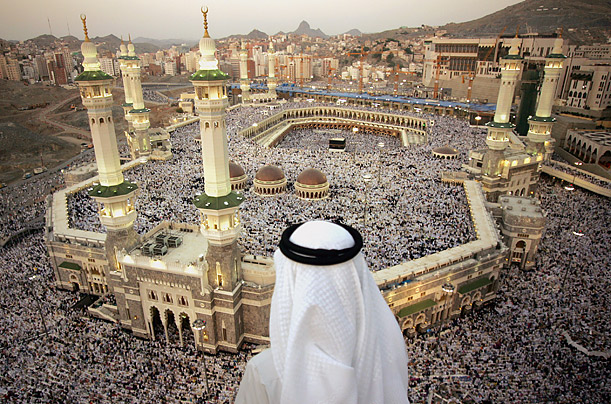









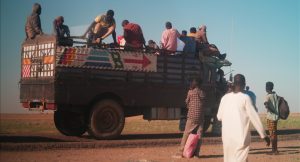
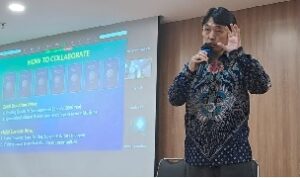

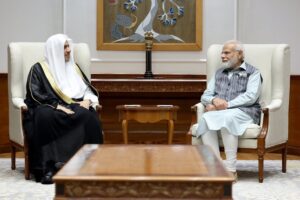






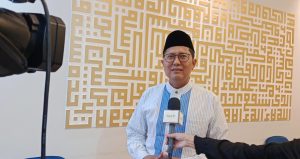





 Mina Indonesia
Mina Indonesia Mina Arabic
Mina Arabic